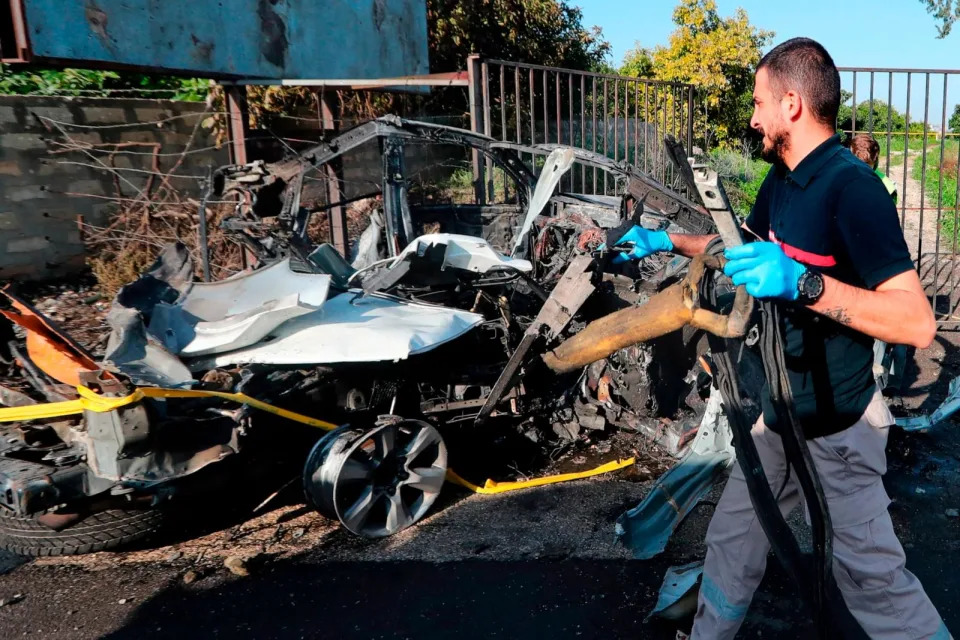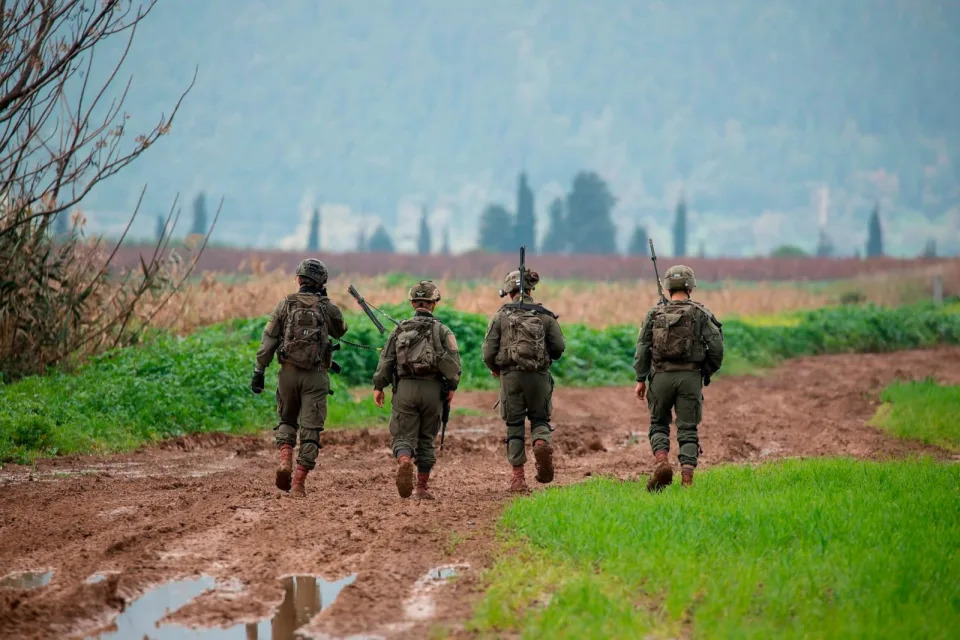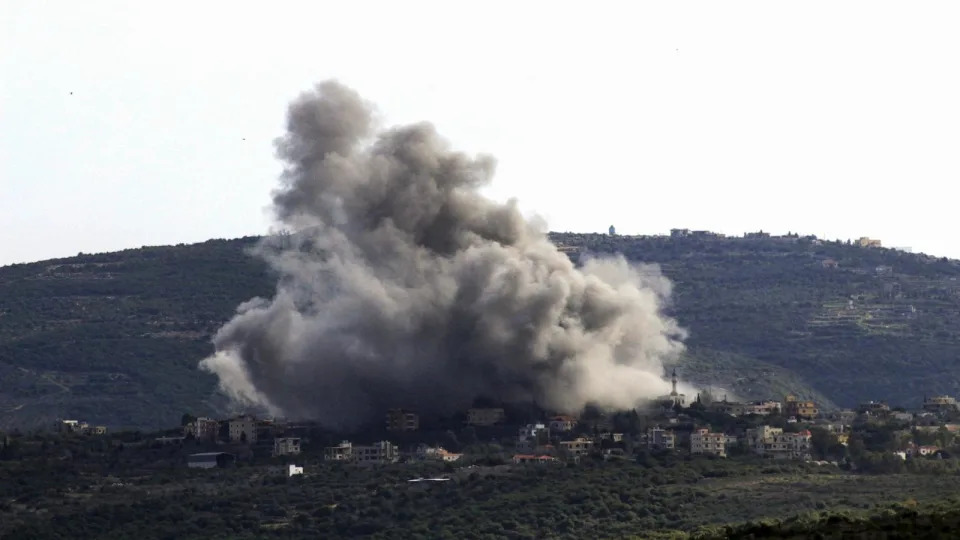Israel is “closer to war” with Hezbollah and a possible regional war than ever, a senior Israeli official said.
Israeli and Hezbollah forces have traded fire across the Lebanese-Israeli border for over three months. The violence has killed about 15 Israelis, including both civilians and Israel Defense Forces members, according to The Times of Israel. The Hezbollah terrorist organization claims 171 of its members have been killed since Oct. 8, The Times of Israel reported.
On Thursday, the Israel Defense Forces reported they struck Hezbollah infrastructure in at least five locations in southern Lebanon. No deaths were immediately reported. There have since been other strikes back and forth, including one Friday when the IDF said it carried out strikes that purportedly killed four members of Hezbollah, per The Times of Israel.
Israel’s north is bristling with tens of thousands of regular troops and about 60,000 reservists, an IDF official told ABC News on Wednesday.
Nearly 100,000 Israelis have evacuated the country’s northern towns and tens of thousands of Lebanese living near the border have fled the fighting, according to an Israeli government estimate. An estimated 76,000 Lebanese living along the border have fled, according to the International Organization for Migration. The Lebanese government has also accused Israel of trying to create a de facto buffer zone by destroying tens of thousands of trees to deprive Hezbollah of cover.

The Israeli official also told ABC News that during an Oct. 11 war cabinet meeting, most of the Israeli ministers, including Defense Minister Yoav Gallant, pressed for a preemptive strike on Lebanon, but that a couple of holdouts, including professional staff and Israeli Prime Minister Benjamin Netanyahu, dissuaded them.
In a recent interview with ABC News, Gallant said Israel is “working against Iran in all the spheres. The Iranians are behind Hezbollah, Hamas, Houthis. They are supporting and funding proxies and conducting attacks … disrupting freedom of navigation.” Gallant’s comments appeared to nod at a series of strikes from Israel that killed key Iranian and Hezbollah officials in Syria and Lebanon in recent weeks.
“Israel has really increased the rhetoric and signals of war recently,” said Maha Yahya, director of the Malcolm H. Kerr Carnegie Middle East Center, while Hezbollah, “which used to respond to Israeli strikes person for person, city for city … has tried to keep a lid on the conflict.” She said both Hezbollah and its backer Iran understand a Hezbollah-Israel conflict could quickly explode into a regional war, dragging in Iran, the U.S. and the U.K., among other states and entities.
The Israeli official also said Israel has used back channels to communicate with the Shiite group’s leader in Lebanon, Hasan Nasrallah. The official said he sent messages to Nasrallah through back channels warning Nasrallah he miscalculated when he began attacks on Israel’s north on Oct. 8, the day after Hamas’ Oct. 7 rampage in Israel that left about 1,200 Israelis dead. The officials said he warned Nasrallah not to provoke Israel, threatening massive retaliation.
Israel’s assessment, said the official, is that Hezbollah is desperate to avoid a full-scale war with Israel, as are its Iranian backers. Hezbollah, and the tens of thousands of missiles it has trained on Israel, serve as an insurance policy against Israel attacking Iranian nuclear facilities, said the official.
Hezbollah has said its immediate goal is to stop Israel’s military activity in Gaza.

Israel, said the official, is hoping that U.S. Special Envoy Amos Hochstein, who has been engaged in shuttle diplomacy in the region, can broker a deal through the Lebanese government to pressure Hezbollah to pull back from the Israeli-Lebanese border in exchange for small Israeli territorial concessions along the border. But a cease-fire along that border with Lebanon, said the official, is primarily contingent on a cease-fire in Gaza.
“Nothing will be signed until there is a cease-fire in Gaza,” the official said. “Even if it’s temporary, like a month-long pause, it would be very difficult to move on a diplomatic solution” while Israel is still focused on fighting a war against Hamas.
In Gaza, Israeli forces continue to operate with ferocity, laying siege on Gaza’s second-largest city of Khan Younis the past week. Gallant, the defense minister, told ABC News earlier this week that Israel has no intention of reducing the pressure there, because “only pressure can move Hamas to return the hostages,” he said. However, he said special operations missions are also part of Israel’s efforts to retrieve at least some of its hostages.
“The future of Israel over the next 100 years depends on our victory in Gaza,” Gallant said. But the definition of that victory has changed. Whereas at the start of the war, Israel vowed to kill every Hamas member involved in the rampage, now Gallant said a complete demilitarization of Hamas and the Gaza Strip would suffice. This includes the removal of the Hamas terrorist group as a governing body and the removal of senior Hamas leadership through any means, including negotiated exile to a third country, he said.

Israeli defense and military officials estimate that air strikes on the Gaza Strip are around 10-15% of what they were at the start of the war, as Gallant says the war’s intensity has subsided significantly in recent weeks. Israeli and some American officials, who spoke on the condition of anonymity, continue to question the accuracy of the Hamas-run Gaza Health Ministry’s daily death toll, even as documented incidents of Israeli fire on civilians proliferate.
According to the Gaza Health Ministry, more than 25,000 people have been killed in Gaza since Oct. 7, when Hamas unleashed its surprise attacks on Israel, killing more than 1,200 people in Israel, according to the Israeli Prime Minister’s Office.
On Wednesday, the United Nations alleged Israel fired two shells into a training facility in Khan Younis that the U.N. said had served as a shelter to 800 Palestinians, and on Tuesday a team from the U.K.’s ITV captured what they said were Israeli snipers shooting dead an unarmed man carrying a white flag, who had moments earlier told the camera team that he was trying to cross the battle lines to his family.
Israel denied that it fired the shells on the U.N. facility and claimed the ITV video with the civilians was edited and that there’s no way of telling who fired the shots.



